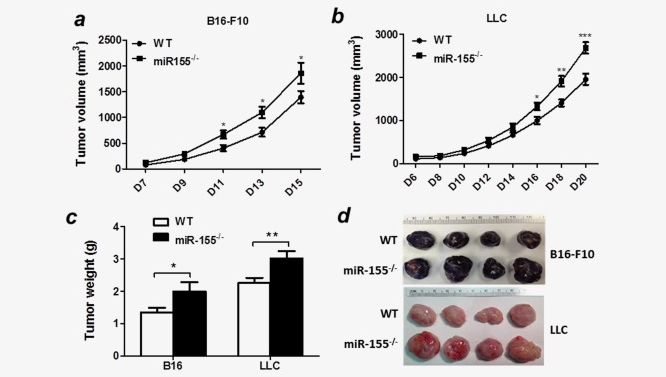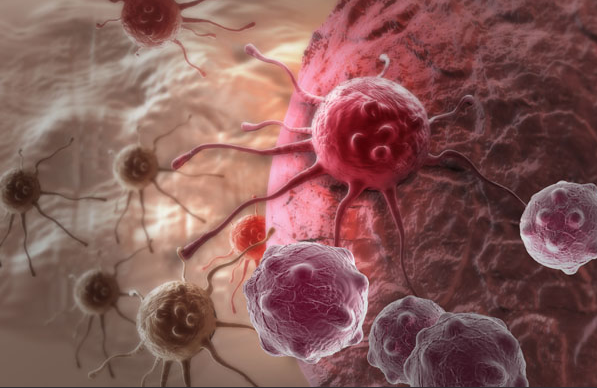Immunotherapy has become a new hope against cancer. CAR-T cell therapy is achieved by using genetic engineering method to express chimeric antigen receptors on T cells obtained from donner patients. These chimeric antigen receptors have anti-tumor specific antigen activity, make T cells become weapons to kill tumors cell. This therapy is considered one of the most promising therapy to treat cancer.
In clinical trials, CAR-T cell therapy improves the curative effect of blood cancer, but the use of CAR-T treatment on solid tumors is not so successful. because its targeted molecules will appear on both normal and cancer cells surface simultaneously, resulting in serious side effects. For scientists, the treatment of solid tumors is still a huge test.
This year, Kite, Novartis and several other large bio companies had made a good clinical record in CAR-T cell therapy, and had also submitted to the FDA application. CAR-T cell therapy of solid tumors seems to be getting closer. In this article, we will take a look at the recent breakthroughs in CAR-T’s treatment on solid tumors.
At the end of 2016, one of the four major medical journals NEJM reported a case of solid tumors specific CAR T treatment—CAR-T therapy got breakthrough in solid tumor treatment for the first time!
The study was conducted by City of Hope, a leading nonprofit research and treatment center. The researchers used 16 CAR-T (6 surgical lesions and 10 ventricles) for IL13Rα2 antigen on a 50-year-old brain tumor patient, whose tumor reappeared 6 after surgery, chemotherapy and radiotherapy before. After this treatment, his intracranial and spinal cord tumors disappeared, and the response continued for 7.5 months, while central cytokines and immune cells increased. This dose (1 million CAR-T cells) did not have 3 level or more toxic side effects. Although this case report made us very excited, but it cannot completely solve the problem of solid tumors. Anyway, it really proved to us the CAR-T treatment effect for glioblastoma.
In the same year, Immunity reported that a kind of CAR for the first time was able to target a variety of different entities or liquid
On June 21, Cell’s Immunity magazine published a new study entitled “Engineered CAR T Cells Targeting the Cancer-Associated Tn-Glycoform of the Membrane Mucin MUC1 Control Adenocarcinoma”. A researcher used genetic engineering to transform human T cells, making them are capable of producing a type of CAR that recognizes a specific glycopeptide which is expressed in a variety of cancer cells but not in normal cells. The team demonstrated the effectiveness of this new CAR-T therapy in the leukemia and pancreatic cancer mouse models.
The researchers said it was the first time that a kind of CAR was able to target a variety of different solid or liquid tumors and had no significant toxicity to normal cells. As for the shortcomings, Johnson said, this was a very new therapy, and many factors associated with tumor levels may limit the treatment. Next, more work was needed to verify the safety of this therapy in advanced mouse models because it is more accurate in predicting safety in the human body; it also needed to demonstrate the efficacy of this therapy in metastatic cancer, because such cancers were the leading cause of cancer-related death.
Journal of Clinical Investigation magazine reported that: CAR-T can effectively treat solid tumors.
A study published in the Journal of Clinical Investigation in 2017 showed that the incorporation of a mixed agent into a mouse can effectively reduce the size of the tumor tissue of mouse pancreatic cancer and melanoma, and the therapeutic effect was greater than that of injecting T cells alone.
Researchers used a synthetic “skeleton” that combines cancer-specific T cells with some nutrients. The viscous and sponge-like biopolymers had many tiny holes that can be made with different sizes and different shapes. And then the researchers had introduced CAR-T cells into the framework and injected some protein maintaining T cell activity, so as to achieve the effect of killing tumor cells.
Mol Ther magazine published an article to describe that the tumor shield is the treatment of the spear: new research develops a safer and more effective CAR T therapy!
In martial arts like judo, the warrior will turn opponents’ power back to themselves, thereby increasing their own strength. In the fight against T cells and tumor cells, T cell immune attack is often weakened due to tumor-induced immune suppression signal. These signals include inhibitory cytokines interleukin-4 (IL-4), interleukin-10 (IL-10), tumor growth factor beta (TGF-beta), etc., which can be produced by cells or matrix components in the tumor microenvironment.
Mohammed and colleagues succeeded in allowing CAR T cells to avoid or even took advantages of these immunosuppressive signals. The researchers used a model of pancreatic cancer cells that produced IL-4 and killed these cells with CAR T cells targeting prostate stem cell antigens (PSCA, a protein that is highly expressed in prostate cancer cells but not expressed in normal cells). They firstly confirmed that the proliferation capacity of CAR T cells exposed to IL-4 were weaker than that of CAR T cells exposed to classical stimulating factor IL-2. They then made these CAR T cells produce a new reversal cytokine receptor (ICR) by binding the IL-4 receptor extracellular segment to the IL-7 receptor intracellular segment. Considering that these receptors were common gamma chain family, they can be heterologous to the common gamma chain heterodimer, so this new receptor can play a role in T cells. It was proved that this hypothesis was correct. These T cells expressing ICR increased their proliferation capacity in the stimulation of IL-4. Researchers then let T cells express both CAR and ICR at the same time, and found that the the proliferation ability of these T cells significantly increased and its ability to kill tumor cells in pancreatic cancer ectopic transplantation model was significantly enhanced.
There is also a potential benefit of this conversion receptor. Although the researchers do not elaborate, it may represent a very important step forward. Since the T cells expressing ICR can proliferate and survive under conditions when IL-4 and PSCA are present at the same time, the normal tissue that does not produce IL-4 may be not attacked by CAR-T even if the same amount of PSCA is expressed. So this strategy will make CAR-T cell therapy more effective and safer.
OncoImmunology published an article showing that lung cancer CAR-T cell preclinical assessment made research progress.
As with all the technologies, CAR-T technology also needs to undergo a long process of change in order to make CAR-T technology gradually mature. Let’s look together.


